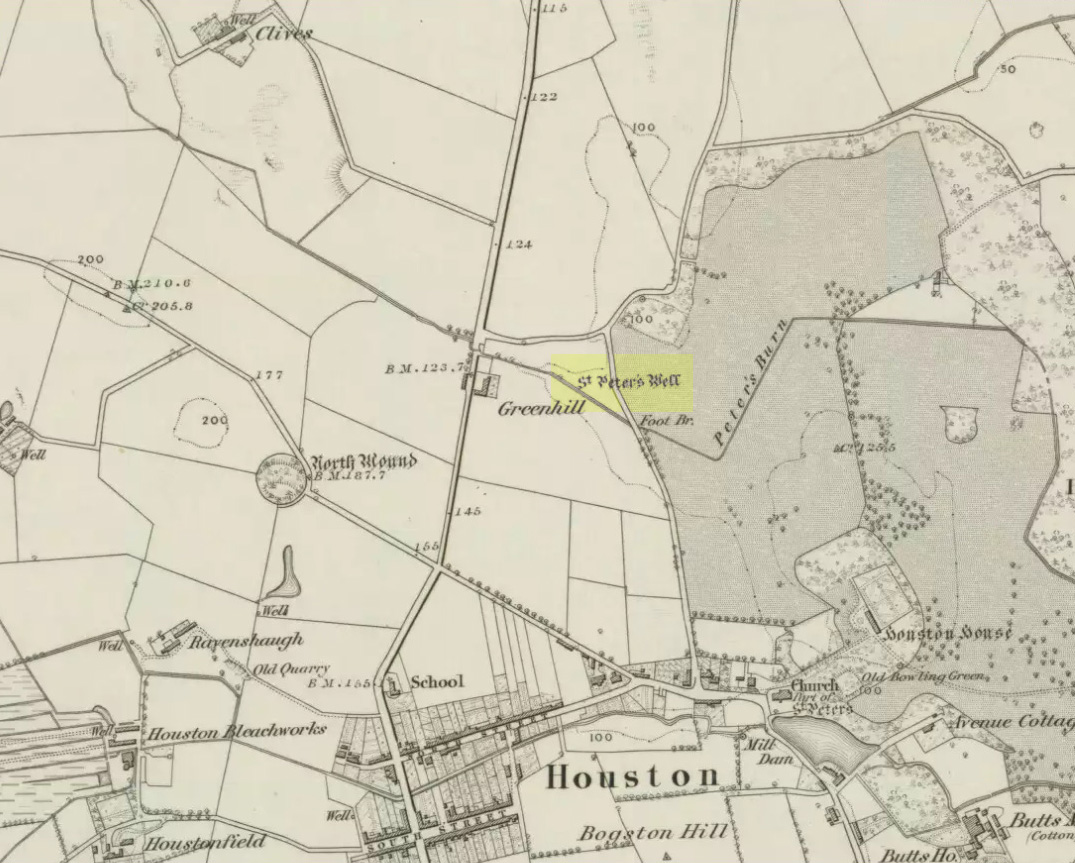Holy Well: OS Grid Reference — NS 40764 67503
Also Known as:
Archaeology & History

Located on the north side of the village, in a field east of Greenhill Farm, this old Well was once (still is?) covered and protected by an old well-house. References to its mythic history are few and far between. St. Peter’s Day was June 29, which may relate to the last vestiges of midsummer rites local people held here; or perhaps when the genius loci was more notable. The Old Statistical Account of 1790 told that the burn which runs past the well was called St. Peter’s Burn; but T.C.F. Brotchie (1920) thought that an old place-name given to the village is telling:
“Houston is a very ancient village,” he wrote, “and it was known long ago as Kilpeter, which is the ‘cell or church of Peter’. The name of the farm near to the well is Chapelton, ‘the place of the chapel’, and I venture to think that when the saintly Peter came a-wandering to Renfrewshire, he established his habitation or cell adjacent to the well, blessed its water, and in that medieval times a chapel was also built there, its memory being enshrined in the place-name Chapelton. Crawford mentions that on St. Peter’s Day vast numbers of people used to come to Houston. He does not state the reason, but I fancy these people came to pay their devoir at the holy well of St. Peter.”
Mr Brotchie was probably right!
(I haven’t yet visited this site. If you travel to this site, please send us your field notes and accompanying photos to let us know of its present condition. All due credits will be given to any and all contributors, obviously.)
References:
- Brotchie, T.C.F., “Holy Wells in and Around Glasgow,” in Old Glasgow Club Transactions, volume 4, 1920.
- Morris, Ruth & Frank, Scottish Healing Wells, Alethea: Sandy 1982.
- Walker, J. Russel, “‘Holy Wells’ in Scotland,” in Proceedings of the Society of Antiquaries of Scotland, vol.17 (New Series, volume 5), 1883.
© Paul Bennett, The Northern Antiquarian